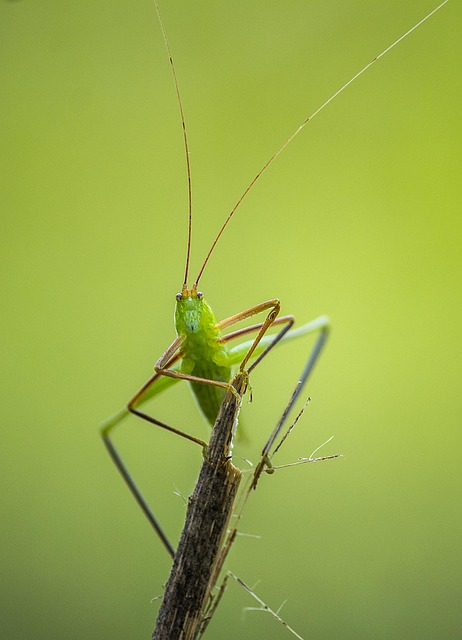Cricket infestations require tailored strategies due to their nocturnal behavior and preference for dark, humid areas. Customized cricket control plans combine non-chemical treatments (e.g., natural predators, light traps) with targeted chemical applications after sealing entry points and improving hygiene. Regular inspections are crucial for monitoring and adjusting these plans, offering long-term relief for homeowners and businesses while minimizing environmental impact. Preventative measures like proper ventilation and vegetation management further reduce infestation risks.
Cricket infestations can transform your peaceful outdoor space into a bustling arena. Understanding their behavior and habitat is the first step towards effective management. This article delves into comprehensive solutions, highlighting customized cricket control plans tailored to specific needs. We explore non-chemical treatments for safer, environmentally friendly options, as well as preventative measures to ensure long-term freedom from these persistent pests.
Understanding Cricket Infestations: Behavior and Habitat
Cricket infestations can be a significant nuisance, especially in residential and commercial settings. Understanding their behavior and habitat is crucial for implementing effective treatments. Crickets are nocturnal creatures that prefer dark, humid, and secluded areas. They often invade homes during warmer months, attracted by food sources like plants, pet food, and even human leftovers. Once inside, they establish nests in cracks, corners, and behind walls, making them difficult to detect until the infestation grows.
Customized cricket control plans are essential for addressing these infestations successfully. These plans should involve a combination of non-chemical and chemical treatments tailored to the specific needs of each property. Regular inspections, sealing entry points, and maintaining good hygiene practices around the home or facility can significantly deter crickets. Chemical treatments, when necessary, should be applied by professionals who can identify cricket habitats and use targeted, environmentally friendly solutions to eliminate the pest effectively.
Customized Cricket Control Plans: A Comprehensive Approach
Cricket infestations can be a significant nuisance, but addressing them requires more than a one-size-fits-all solution. This is where customized cricket control plans come into play. These tailored strategies consider the unique characteristics of each property or area, ensuring efficient and effective management. By evaluating factors like species presence, environmental conditions, and human activity, pest control professionals can develop targeted methods that go beyond conventional treatments.
A comprehensive approach involves a combination of preventive measures, such as sealing entry points and reducing moisture sources, along with targeted applications of insecticides or baits. Regular inspections are crucial to monitor cricket populations and adjust the control plan accordingly. This proactive mindset not only eliminates current infestations but also prevents future recurrences, providing long-term relief for homeowners and businesses alike.
Non-Chemical Treatments: Safe and Environmentally Friendly Options
Non-Chemical Treatments offer a safer and more environmentally friendly approach to cricket infestations, appealing to those who prefer natural solutions or have specific concerns about chemical exposure. These methods focus on disrupting the cricket’s life cycle and habitat rather than directly eliminating them. One effective strategy is introducing natural predators like spiders, birds, and certain insects that feed on crickets. This biological control method promotes a balanced ecosystem while keeping cricket populations in check.
Customized Cricket Control Plans often involve removing potential habitats and food sources. This includes trimming vegetation, sealing entry points in structures, and ensuring proper waste management to minimize moisture, both of which attract crickets. Light traps can also be employed to lure and capture crickets without the use of chemicals. These non-toxic techniques require careful planning and adaptation to specific environments, but they provide long-lasting solutions that are safe for humans and pets while minimizing ecological impact.
Preventative Measures: Long-Term Solutions for Cricket Management
Preventative measures are key to long-term cricket management, offering sustainable solutions for both residential and commercial spaces. Customized cricket control plans tailored to specific environments can significantly reduce infestations. These strategies include implementing strict hygiene practices, such as regular cleaning and maintaining a clutter-free space, as crickets thrive in damp, secluded areas. Additionally, sealing entry points like gaps in walls or windows, and ensuring proper ventilation, creates an inhospitable environment for these insects.
Landscapers and property managers can further deter crickets by managing vegetation, trimming trees, and removing potential breeding grounds nearby. Using natural repellents and beneficial insects that target crickets can also be effective, providing eco-friendly alternatives to chemical treatments. These preventative approaches, when combined with regular monitoring and swift action, can effectively manage cricket populations and minimize the need for extensive pest control interventions.
In addressing cricket infestations, a multi-faceted approach offers the best results. By understanding these insects’ behavior and habitat (Understanding Cricket Infestations), implementing tailored strategies through customized cricket control plans (Customized Cricket Control Plans), exploring non-chemical treatments (Non-Chemical Treatments), and adopting preventative measures (Preventative Measures), homeowners and businesses can effectively eliminate current infestations and prevent future recurrence. These comprehensive solutions ensure a safe, environmentally friendly, and long-lasting cricket management strategy.
